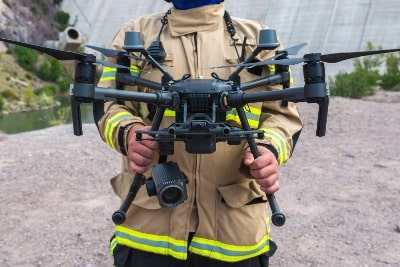Revolutionizing Search and Rescue: Latest Drone Technology Trends

Search and rescue operations are essential in disaster response, emergency management, and law enforcement. In recent years, drone technology has emerged as a valuable tool in search and rescue efforts. Drones can provide a unique perspective, access hard-to-reach areas, and gather critical data in real-time. In this article, we will discuss the latest trends and advancements in search and rescue drone technology.
Improved Imaging Capabilities
One of the most significant advancements in search and rescue drone technology is improved imaging capabilities. The latest drones are equipped with high-definition cameras that can capture images and videos in real-time. This feature is particularly useful in search and rescue operations where time is of the essence.
The cameras on modern search and rescue drones are also equipped with thermal imaging capabilities. Thermal imaging can detect heat signatures and provide a clear view of a target in low light conditions. This technology is particularly useful in detecting human beings or animals that may be lost or trapped.
Autonomous Flight Capabilities
Another trend in search and rescue drone technology is autonomous flight capabilities. Autonomous drones can operate without human intervention, allowing them to reach remote locations and cover large areas quickly. These drones are equipped with sensors and GPS technology that allows them to navigate and avoid obstacles automatically.
Autonomous drones can be programmed to follow specific flight paths or search areas, allowing them to cover vast areas more efficiently. This technology is particularly useful in search and rescue operations where time is critical and resources are limited.
Longer Flight Times
The latest search and rescue drones are equipped with high-capacity batteries that provide longer flight times. This feature is particularly useful in search and rescue operations where drones must cover vast areas or stay airborne for extended periods. Longer flight times also mean that search and rescue teams can gather more data, increasing the chances of locating missing persons.
Improved Durability
Search and rescue drones must be able to withstand harsh environments and challenging conditions. The latest drones are designed with improved durability, allowing them to operate in adverse weather conditions, such as rain or wind. These drones are also equipped with collision avoidance systems that help prevent accidents in challenging environments.
Improved Communication Systems
Effective communication is critical in search and rescue operations. The latest drones are equipped with advanced communication systems that allow them to transmit data in real-time. This technology enables search and rescue teams to communicate more effectively, providing critical information quickly.
Integrated Artificial Intelligence
Artificial intelligence is rapidly becoming an essential part of search and rescue drone technology. The latest drones are equipped with integrated AI systems that can analyze data in real-time and provide valuable insights. For example, AI algorithms can detect patterns in thermal imaging data, making it easier to locate missing persons or animals.
AI algorithms can also help drones navigate more efficiently, avoiding obstacles and optimizing flight paths. This technology is particularly useful in search and rescue operations where time is critical, and resources are limited. Search and rescue drone technology has come a long way in recent years. The latest drones are equipped with advanced imaging capabilities, autonomous flight capabilities, longer flight times, improved durability, improved communication systems, and integrated artificial intelligence. These advancements have made search and rescue operations more efficient, effective, and safer. As drone technology continues to evolve, we can expect to see even more exciting innovations in the future.